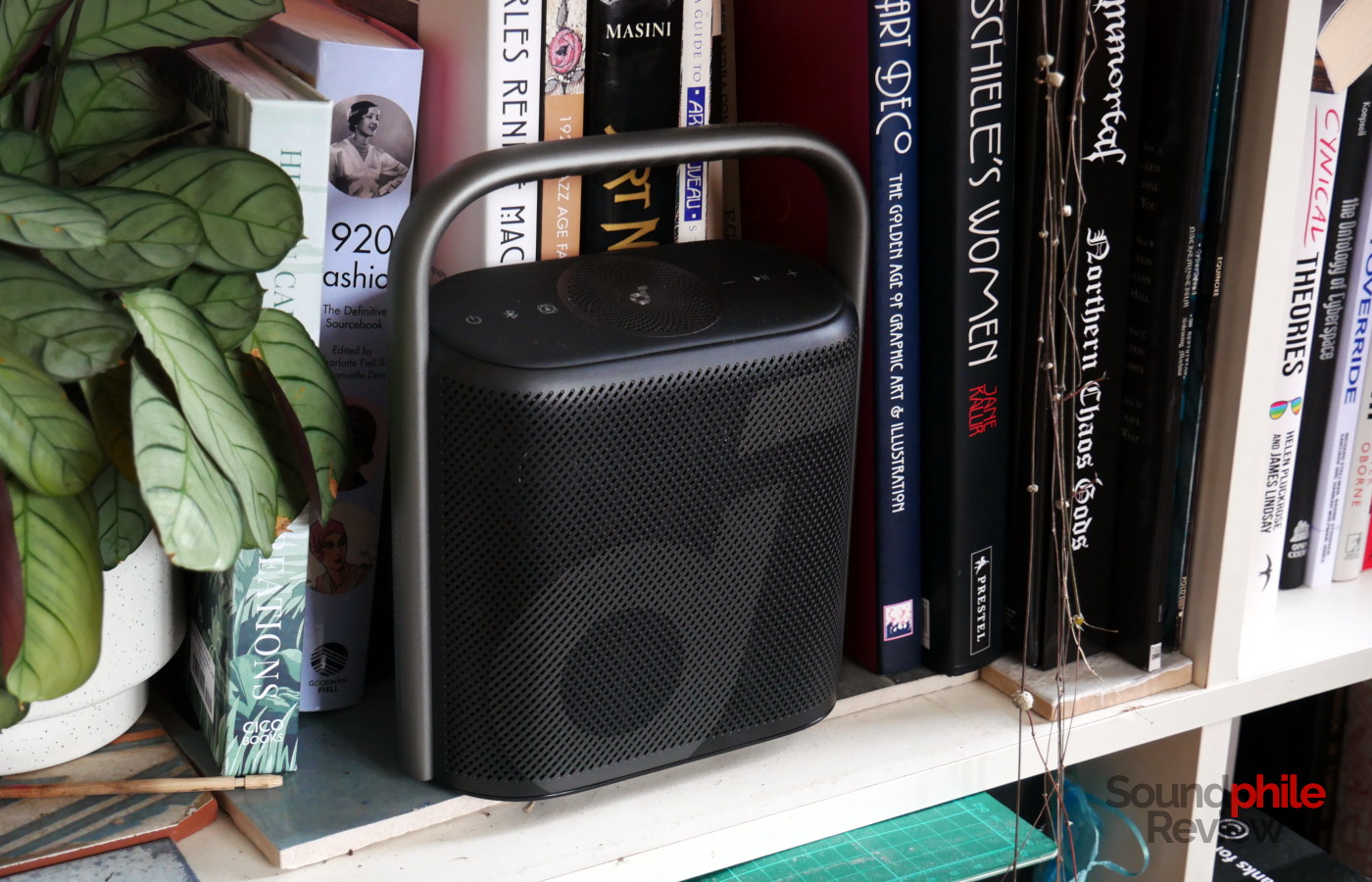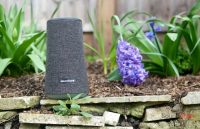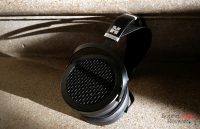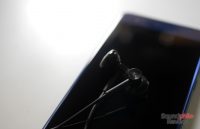Spatial sound is all the rage right now, with companies investing heavily in both content and devices capable of supporting it. While this is mostly confined to multi-channel home cinema setups on one hand and to the headphones space on the other, the soundcore Motion X500 tries to change this by offering a portable speaker with spatial audio. That’s a bit different than what you’d expect, though – let’s find out why.
Disclaimer: I received a free unit directly from soundcore.
TL;DR: recap
| Pros |
Cons |
| + Very convenient design
+ Great build quality + The spatial sound feature actually works! |
– Treble can be a bit aggressive
– Not the most neutral of tunings – It takes a long time to charge |
Rating: 7/10
Packaging & Accessories
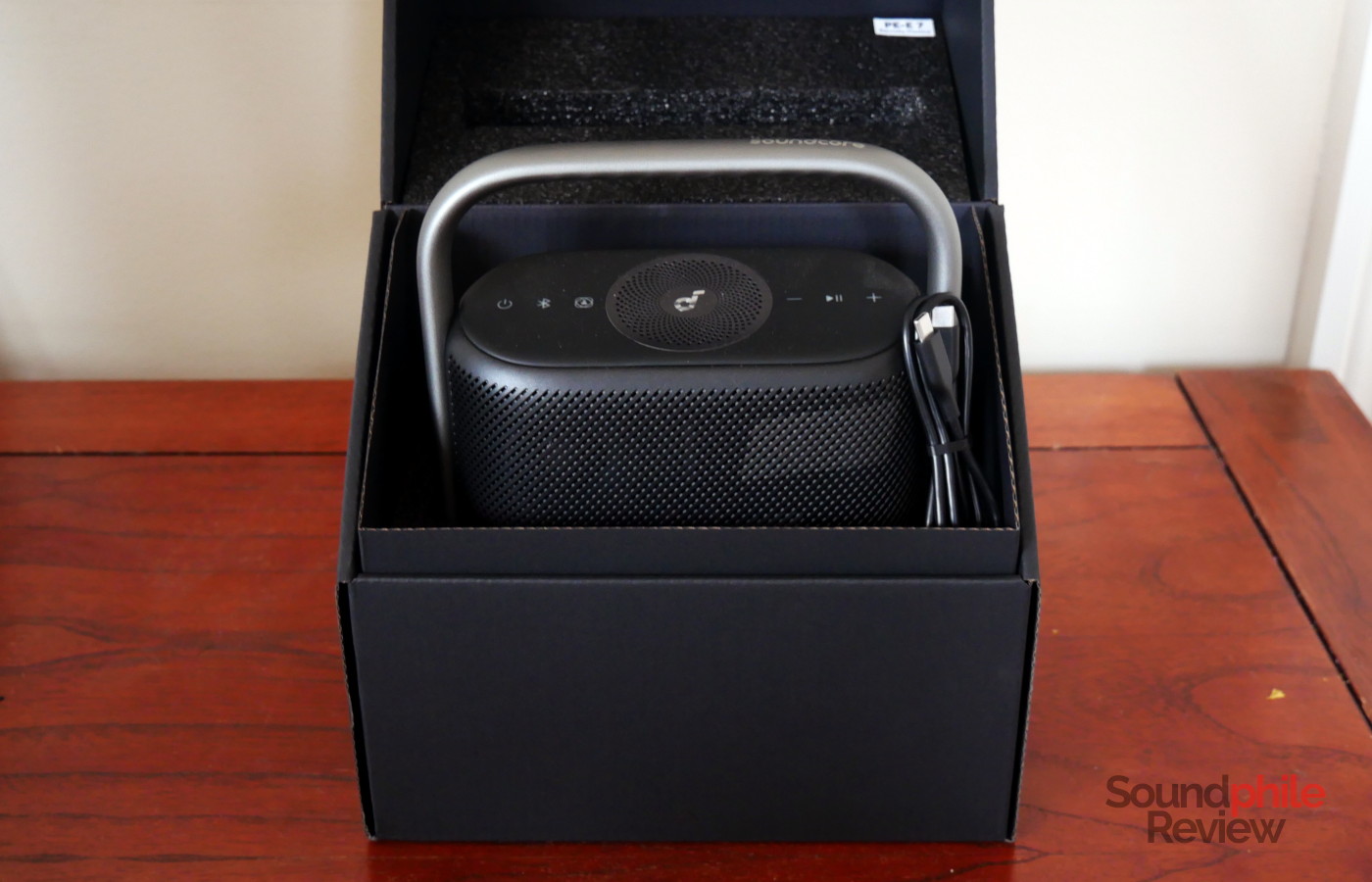
The packaging only contains the speaker and a USB-C to USB-C cable to charge it.
Design & Build
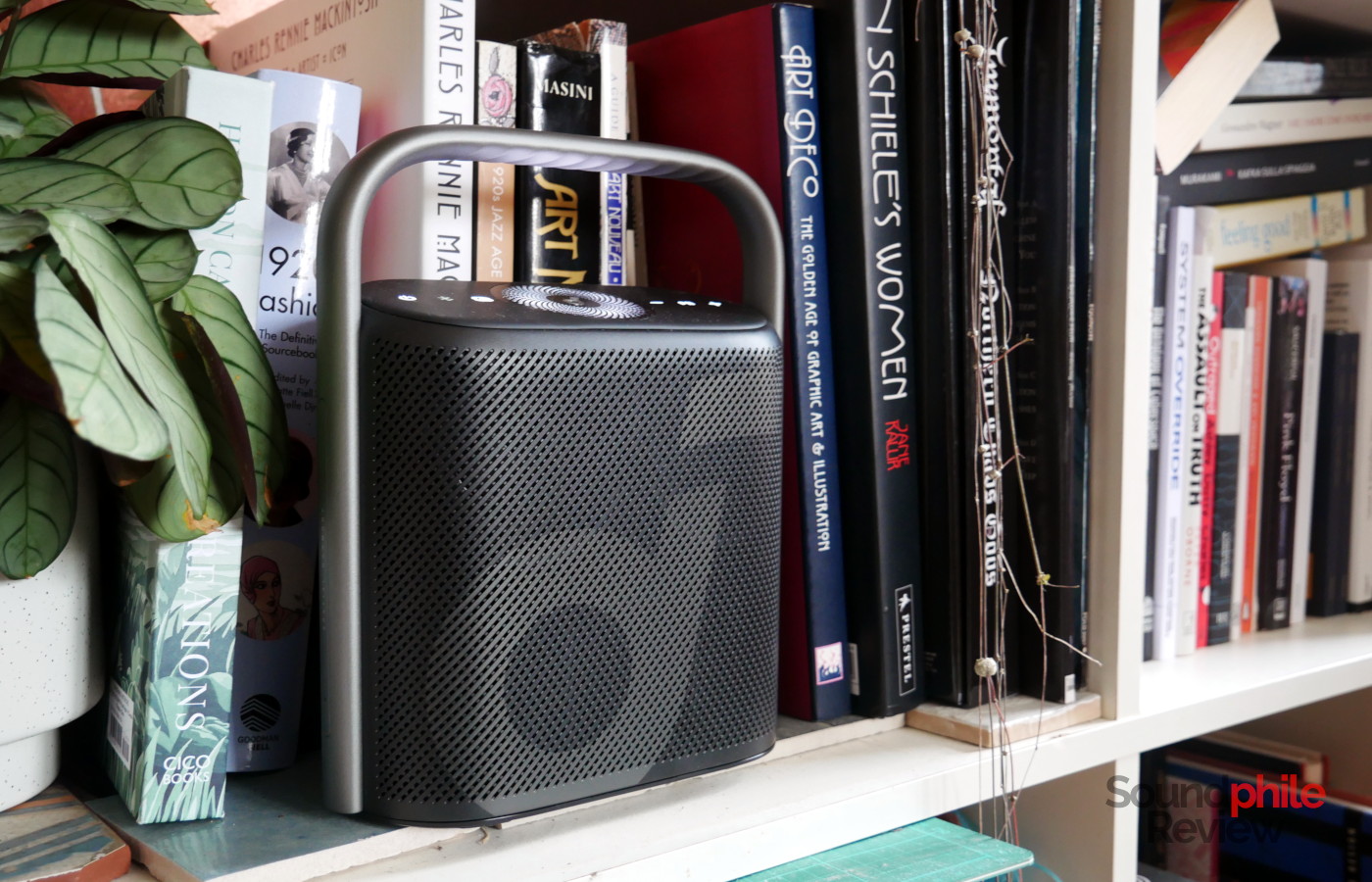
The soundcore Motion X500 diverges from the usual boxy design of speakers by including a metal handle. The main body is oval, with the front having a grille full-height grille to let the sound out and the back having a much smaller one, behind the woofers, presumably to help with bass. Below it is a small rubber flap that allows access to the USB-C port used for charging. The design is overall very modern and “young”.
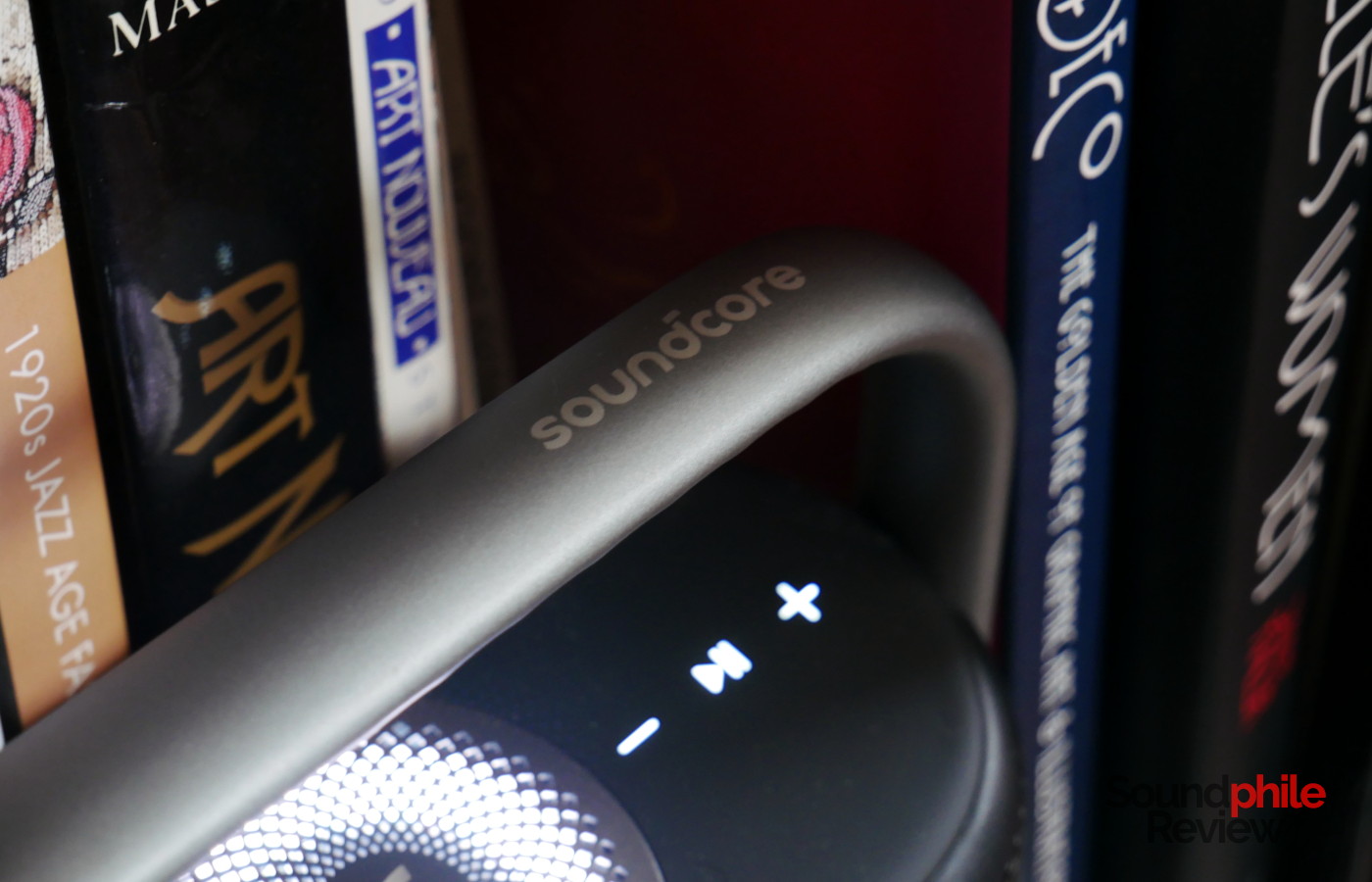
The aluminium handle is incredibly convenient and allows you to move the speaker effortlessly, on top of being very nice both to look and to touch. In general, the build quality appears to be very high and the materials used of good quality. The speaker feels robust and durable; its size of about 22.5 x 18.8 x 7.7 cm (including the handle) and weight of 1.65 kg make it easily transportable. The Motion X500 boasts an IPX7 certification, which means you can submerge it completely in water (up to 1 m for up to half an hour) without damaging it.
The peculiarity of this speaker lies in its top: not only do we find here the buttons to control it, but also a driver, hidden behind a decorated metal grille with the soundcore logo. The buttons on each side are power, Bluetooth, equalisation, vol-, play/pause and vol+.
Features & Specs
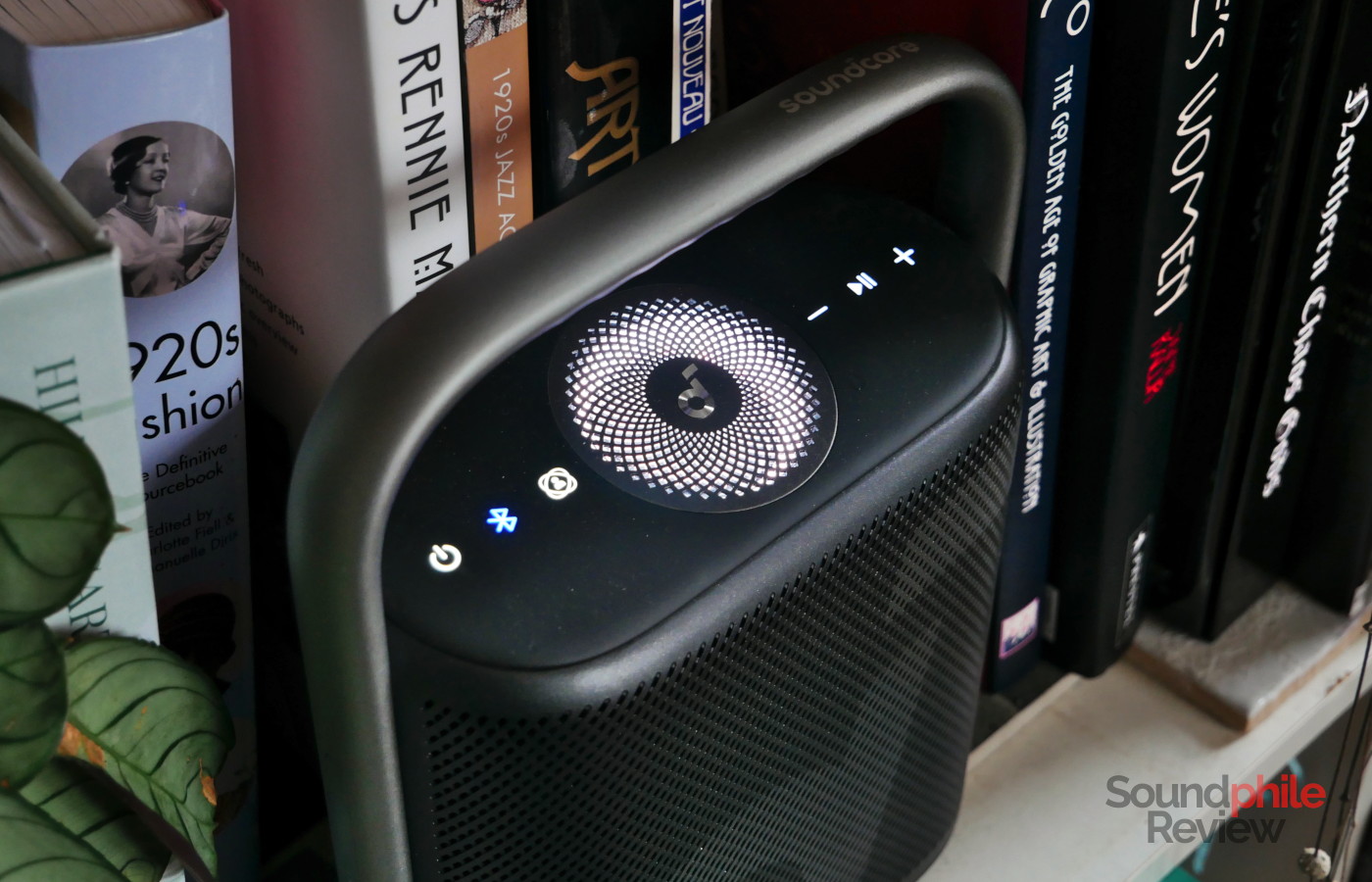
soundcore does not publish much technical information on the Motion X500 and most of the information you find in the table below has been compiled from their marketing material, which however leaves many holes.
soundcore Motion X500 |
| Frequency response | ? – 40,000 Hz |
| Power output | 40 W |
| Maximum SPL | N/A |
| Connections | Bluetooth (unknown version) |
| Codecs | SBC, AAC, LDAC |
| Driver type | 2 main woofers, 1 upward-firing tweeter |
The soundcore Motion X500 can connect to your devices through Bluetooth (the specific version is unknown), which supports the SBC, AAC and LDAC codecs. In order to take advantage of the LDAC codec, you have to not just enable it in the settings, but you also have to install a new firmware. The connection is very strong and stable; I can walk around the house with multiple walls in between the speaker and my phone with no interruptions or stuttering taking place.
It is possible to pair two Motion X500s to use them in stereo mode, but I haven’t had a chance to test this functionality, having only one speaker. You can customise some things, like the feedback sounds or the colour of the LED that lights up the top driver, through the soundcore application which is available for both Android and iOS.
The microphone isn’t great and, according to people I talked to, it makes you sound distant, as well as picking up the voice of your interlocutor.
Battery Life
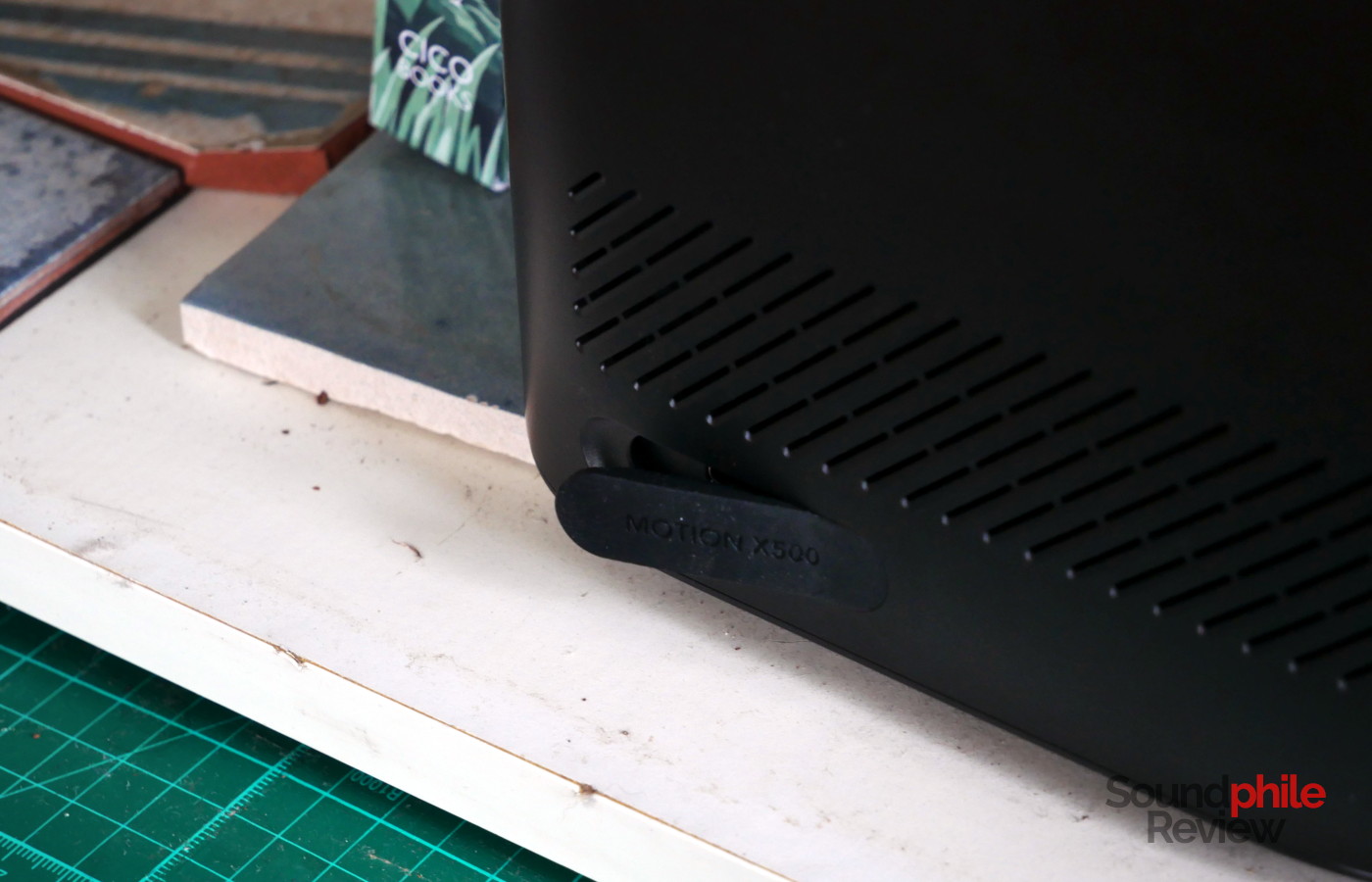
Given its size is modest but not diminutive, it is fair to expect the soundcore Motion X500 to offer decent battery life, and that is actually the case. The speaker does get remarkably close to the 12 hours of playback publicised by the manufacturer, which is a very good result. One possible negative aspect to consider, however, is that the speaker takes about five hours to charge when using a 15 W adapter, which is indeed a long time.
Sound
I tested the soundcore Motion X500 mostly using my Google Pixel 7 Pro smartphone, with LDAC enabled.
soundcore’s vision of spatial audio (pardon the wordplay) is a bit different than that offered by headphones or home cinema setups and is more about creating the impression of a much larger stereo setup. There is a clear technological limitation – which ultimately comes down to physics – which makes it so that it is very difficult to offer the same kind of “all around you” spatiality that the other options are known for: to use a euphemism, it is very hard for a small speaker that’s physically in a specific position (e.g. in front of you) to simulate sounds coming from somewhere else! What the Motion X500 does is to actually enlarge the soundstage and make sound larger, so that music sounds not like it was coming from a small speaker, but from a stereo setup, with a soundstage that extends beyond the speaker itself. It will sound very convincing in the majority of cases, but it is also highly dependent on the track you are playing and in some it won’t be as good (e.g. David Holmes’ soundtrack for Haywire).
Before proceeding with the analysis, it should be noted that soundcore issued a firmware update which substantially changed the sound of the speaker; the following description applies to version 4.0.3 of the firmware. Here are differences between the three modes:
- spatial signature: this mode appears to be heavily dependent on the track itself to deliver the sensation of spatial sound. It does enlarge the soundstage convincingly and it gives you the impression that the sound comes from beyond the speaker itself. As a practical example, in Rodrigo y Gabriela’s Sunday Neurosis the aeroplane sound at the end sounds like it is extending beyond the actual placement of the speaker. The illusion is very convincing, so much so that in a couple of occasions I had to check the sound was coming from the Motion X500 lying on my desk and not from my stereo speakers!
- spatial dynamic: this mode delivers a spatial sensation very similar to the previous one, but it adds a substantial bass boost to it. It works best with music which requires a boost in the lower frequencies, such as electronica.
- bass boost: this mode only boosts bass and has no spatial features, so it is in a way closer to the “actual” sound of the Motion X500. You can clearly tell that the sound comes from the speaker.
Overall, the result of these spatial audio features is quire impressive, especially considering the small size of the soundcore Motion X500. It works best if you face the speaker, but you do get the impression of a “larger” sound even when you set the speaker in a room and move around.
Instrument separation is decent, but limited: take any complex track (like Oranssi Pazuzu’s Ilmestys) and you keep almost everything, but you do lose some bits in the mix. This is a theme that recurs in all other areas: tuning is nice, but it has to deal with the (physical) limits of such a small device.
When looking at the spatial signature, which is the most balanced of the three, bass is impressively deep for the size, but it doesn’t quite reach sub-bass levels. It has decent speed, so transients are reasonably fast and allow for sufficient layering. In terms of quantity, bass is above neutrality, but not in such a way that it becomes overbearing.
Midrange is focused on the upper area, which is the most prominent and towers above the rest. It makes instruments such as guitars and female vocals stand out especially, though this doesn’t mean that other instruments (e.g. male vocals) suffer from this. I feel confident in ascribing parts of this to the soundstage enlargement: the sound is manipulated by a DSP to make it larger, but this entails that some frequencies are shifted upwards and this creates this situation. Again, it is noticeable but it doesn’t disrupt the listening experience. There is a decent level of detail here as well.
Treble stands in front of everything else and is relatively aggressive. It has a few peaks in the lower area that can become fatiguing, particularly if the track you are playing is already rich of instruments like cymbals. Detail is sufficient and, as is expected on a device like this, you get the broad picture rather than the smaller minutiae, which is sufficient to enjoy music on the go.
Final Thoughts
I was pleasantly surprised by how the soundcore Motion X500 delivers spatial audio: considering the size, weight, shape and price of the speaker, it does indeed make a tangible difference. Although it won’t rival dedicated stereo setups, it will make your music listening experience different – and, in my opinion, in many ways better. This is coupled with a great build quality and the high-quality LDAC codec, which together make the Motion X500 a very interesting proposition which can satisfy a wide range of people.

